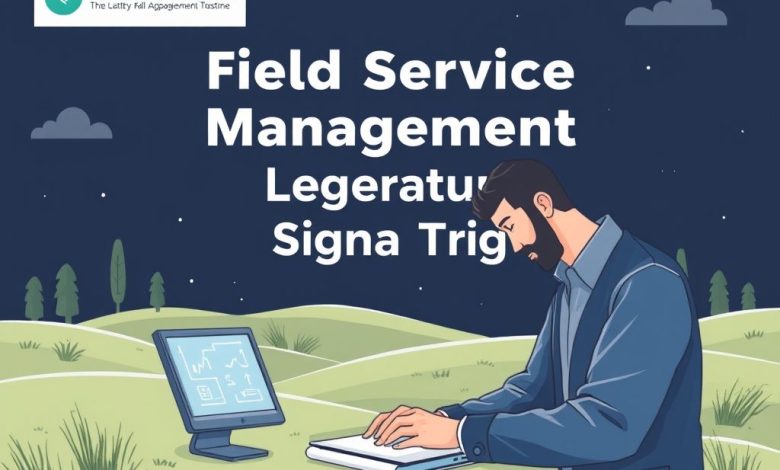Field Service Management Leveraging Signature-Triggered Next Steps for Enhanced Efficiency

Introduction
Field Service Management (FSM) is a critical component of many businesses, particularly those in industries such as HVAC, electrical contracting, plumbing, and home maintenance. It involves managing and coordinating field service operations, including scheduling, dispatching, and tracking technicians’ activities. In recent years, technology has significantly impacted FSM, introducing new tools and processes to improve efficiency and customer satisfaction.
One innovative approach in FSM is the use of signature-triggered next steps. This method leverages digital signatures to automate workflows and streamline operations. In this article, we’ll explore the concept of Field Service Management with Signature-Triggered Next Steps, its benefits, implementation strategies, and best practices.
The Evolution of Field Service Management
Field Service Management has come a long way since its inception. From manual paper-based systems to modern cloud-based software solutions, the industry has witnessed significant advancements. Today, FSM encompasses a wide range of functionalities, including:
- Scheduling and dispatching
- Resource allocation
- Work order management
- Inventory control
- Customer relationship management
- Reporting and analytics
These features enable businesses to manage their field operations more effectively, leading to improved productivity and customer satisfaction.
Signature-Triggered Next Steps in Field Service Management
Signature-triggered next steps represent a new frontier in FSM technology. This approach uses digital signatures to automatically trigger subsequent actions in a workflow. Here’s how it typically works:
- A technician arrives at a customer’s location and completes a job.
- Upon finishing the task, the technician captures the customer’s signature electronically.
- The system automatically generates a new work order based on the signed document.
- The next available technician receives the assignment and proceeds to the new location.
This process eliminates manual data entry, reduces errors, and ensures seamless handoffs between technicians.
Benefits of Signature-Triggered Next Steps
Implementing signature-triggered next steps in Field Service Management offers several advantages:
- Increased Efficiency: By automating the generation of new work orders, technicians can focus more on completing jobs rather than administrative tasks.
- Improved Accuracy: Digital signatures reduce the likelihood of human error in capturing customer information or job details.
- Enhanced Customer Experience: Customers benefit from faster service resolution and reduced wait times.
- Better Data Management: Electronic signatures provide a clear audit trail and ensure all necessary information is captured consistently.
- Cost Savings: Reduced paperwork and streamlined processes lead to lower operational costs.
- Scalability: As business grows, the system can easily accommodate increased volume without requiring significant changes to existing processes.
Implementation Strategies
To successfully implement signature-triggered next steps in Field Service Management, consider the following strategies:
- Choose the Right Technology: Select a robust FSM platform that supports electronic signatures and automated workflows.
- Train Your Team: Ensure all technicians understand the new process and how to use the signature capture feature.
- Integrate with Existing Systems: If possible, integrate the new system with current CRM or ERP platforms to maintain consistency across departments.
- Start Small: Begin by implementing the new process in a limited number of locations or for specific types of services.
- Monitor and Adjust: Continuously monitor the impact of the new system and make adjustments as needed.
Best Practices
When implementing signature-triggered next steps in Field Service Management, keep these best practices in mind:
- Security: Ensure that electronic signatures are secure and compliant with industry regulations.
- User-Friendly Interface: Design the signature capture process to be intuitive and easy to use for both technicians and customers.
- Customization: Tailor the system to meet the specific needs of your business and industry.
- Regular Updates: Keep the FSM platform updated to take advantage of new features and improvements.
- Customer Communication: Clearly explain the new process to customers to manage expectations and increase adoption rates.
Conclusion
Field Service Management with signature-triggered next steps represents a significant advancement in the industry. By leveraging digital signatures to automate workflows, businesses can enhance efficiency, accuracy, and customer satisfaction. While implementation requires careful planning and execution, the benefits far outweigh the challenges.
As technology continues to evolve, it’s crucial for field service managers to stay ahead of the curve. Embracing innovative solutions like signature-triggered next steps will position companies for success in an increasingly competitive market. Whether you’re looking to streamline operations, improve customer experience, or simply stay ahead of the competition, exploring Field Service Management with signature-triggered next steps is definitely worth considering.



